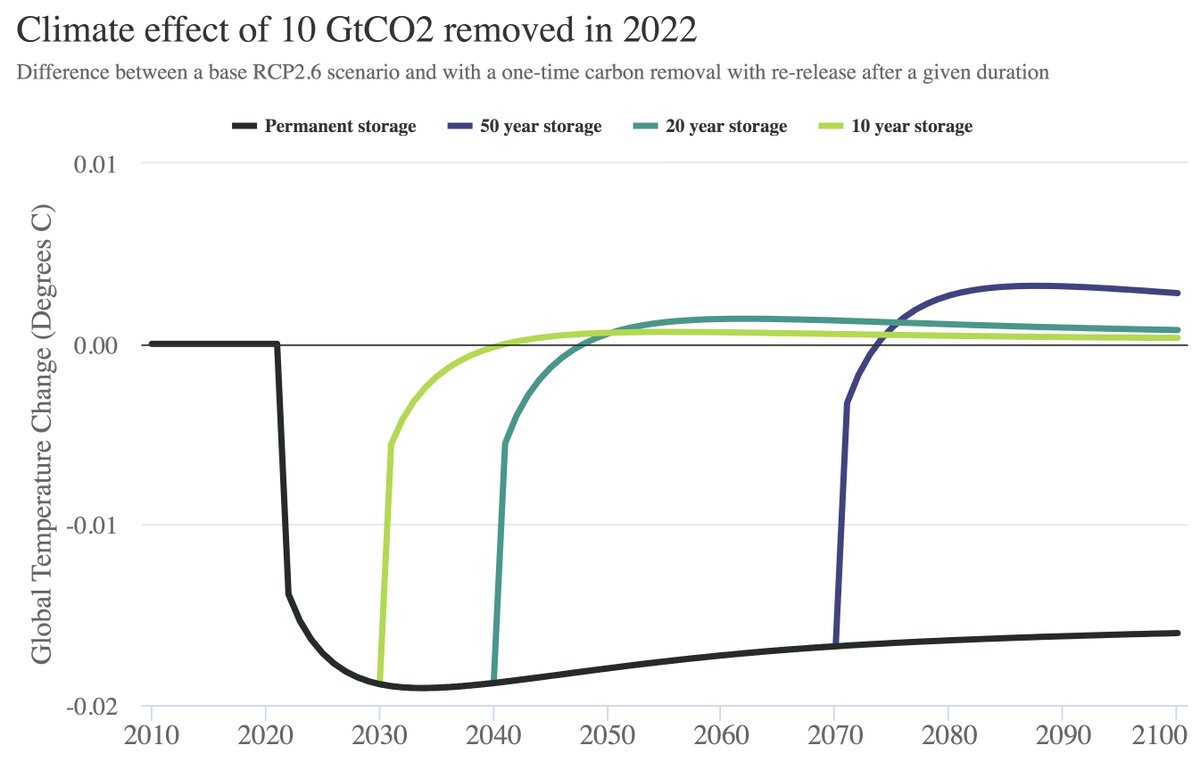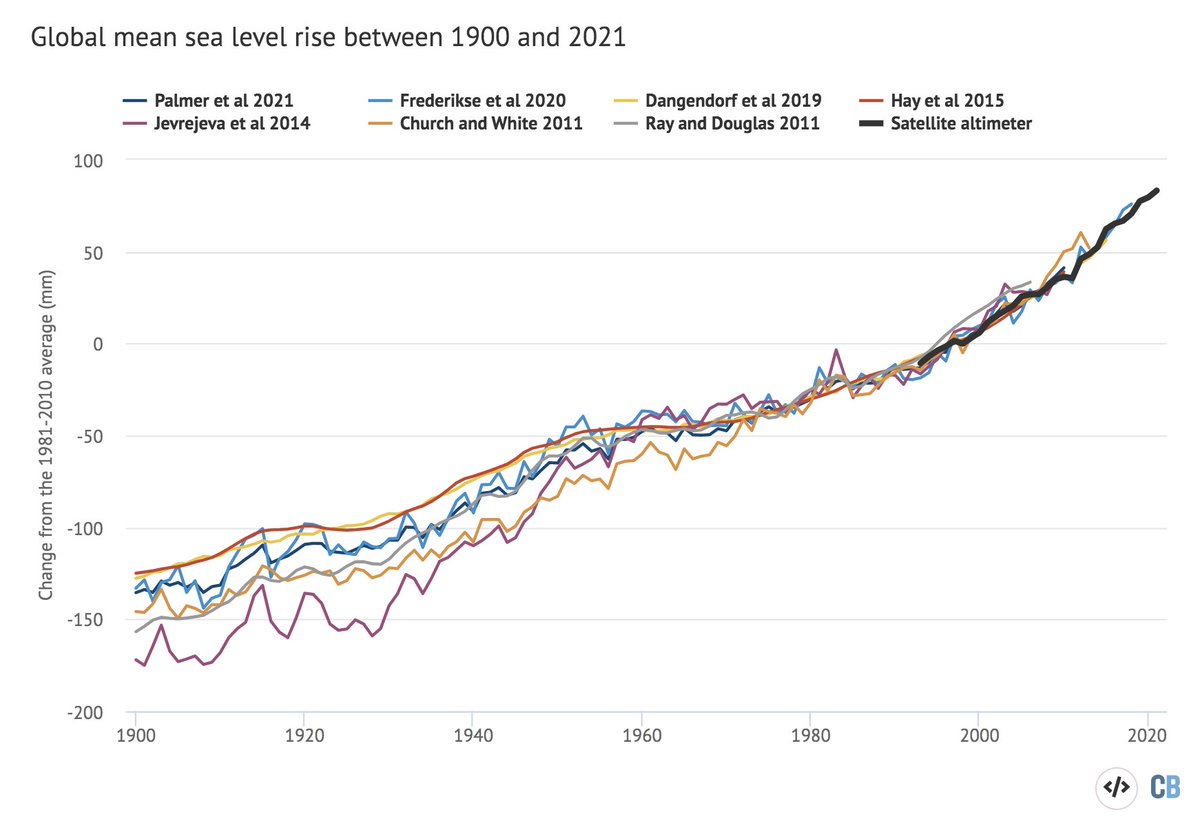
Looks like @_david_ho_ and I confused a lot of folks around carbon cycle responses to CO2 removal, so a slightly longer thread would be useful to explain the nuance here.
TLDR: CDR still negates an equal amount of positive emissions as long as it stays out of the atmosphere. 1/
TLDR: CDR still negates an equal amount of positive emissions as long as it stays out of the atmosphere. 1/
When we add a ton of CO2 to the atmosphere, only about half of it stays there over a longer (century-scale) timeframe, with the other half absorbed by ocean and biosphere carbon sinks. This is a good thing; it means atmospheric CO2 is only half as high as would otherwise be! 2/
Specifically, when we add a ton of CO2 to the atmosphere, 20% of that ton is absorbed by sinks quite quickly (~5 years), 40% is absorbed in the first 20 years, and 60% is absorbed over the first 100 years. However, about 20% will still be in the atmosphere in 500k years! 3/ 

The portion of our emissions accumulating in the atmosphere is referred to as the airborne fraction. This is expected to change depending on future emissions; in scenarios where we rapidly cut emissions, less end up in the atmosphere; if emissions increase more ends up there. 4/ 

This raises an interesting question: if only half of our emissions ends up in the atmosphere, what happens if we remove CO2 from the atmosphere? If one ton of CDR were to permanently reduce atmospheric CO2 by one ton, it would mean CDR is twice as effective as emissions! 5/
Unfortunately, it turns out that carbon cycle acts symmetrically. At equilibrium (e.g. constant concentrations), removing a ton of CO2 from the atmosphere would result in outgassing of CO2 from the oceans and biosphere that emits roughly half of what you remove. 6/
In practice, in a world of increasing atmospheric CO2 (as we live in today), a ton of carbon removal is effectively the same as reducing our emissions by one ton. The atmosphere cares about our net emissions: emissions minus removals, and treats them effectively the same. 7/
Why this nuance matters, however, is if we want to calculate how much CDR is needed in, say, overshoot scenarios where world passes 1.5C and we need to bring atmospheric concentrations back down. Its also tripped up quite a few scientists in the past:
https://twitter.com/hausfath/status/13164816190755880968/
But for folks working in carbon markets, all you really need to know is a ton of CDR effectively cancels out a ton of emissions as long as it stays out of the atmosphere. But given the extremely long life of CO2 perturbations, this caveat is important!
https://twitter.com/hausfath/status/14842464335029411849/9
Correction, this should have said "about 20% will be still in the atmosphere in 10k years". A portion will still be around in 500k years, but it will be less than 20%.
• • •
Missing some Tweet in this thread? You can try to
force a refresh












